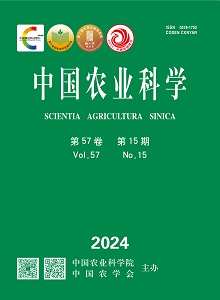不同桑树(Morus alba L., M. alba × rubra, M. australis Poir.)叶片中蛋白质和酚类物质的组成。, M. nigra L.)
引用次数: 0
摘要
桑树(Morus sp.)的叶子有多种药用、烹饪、工业和农业用途。在本研究中,我们比较了不同桑种(Morus alba L., M. alba × rubra, M. australis Poir.)的蛋白质和酚类含量。, M. nigra L.)从桑树种质收集中确定种特异性差异。综述了桑葚作为动物饲料和药理用途的可能性。采用Folin-Ciocalteu法分析各基因型的总酚含量,采用Lowry法测定总蛋白含量。采用紫外/可见高效液相色谱法对各酚类物质进行分析。总蛋白含量从162.03 mg BSA/g DW(南稻)到239.42 mg BSA/g DW(白稻)不等。白桦叶片中总蛋白含量显著高于其他叶片。总酚(21.51 mg GAE /g DW)、绿原酸(18.05 mg/g DW)、4-咖啡酰奎宁酸(4.36 mg/g DW)、5-对香豆素酰奎宁酸(2.01 mg/g DW)、槲皮苷(0.74 mg/g DW)和山奈酚乙酰己糖苷(4.42 mg/g DW)的平均浓度最高。相比之下,白桑(m.a alba)基因型平均含有最多的芦丁(2.63 mg/g DW)和槲皮素-丙二酰己糖(1.59 mg/g DW)。综上所述,白桑叶蛋白质含量高,最适合作为动物饲料,而黑桑叶及其杂交品种白桑叶酚类物质含量高,具有药理潜力。本文章由计算机程序翻译,如有差异,请以英文原文为准。
Composition of Proteins and Phenolics in the Leaves of Different Mulberry Species (Morus alba L., M. alba × rubra, M. australis Poir., M. nigra L.)
The leaves of the mulberry (Morus sp.) have a variety of medicinal, culinary, industrial and agricultural applications. In our study, we compared the protein and phenolic contents of different mulberry species (Morus alba L., M. alba × rubra, M. australis Poir., M. nigra L.) from the mulberry germplasm collection to determine species-specific differences. The possibility of using mulberries as animal feed and for pharmacological purposes was reviewed. Total phenols of all genotypes were analysed using the Folin-Ciocalteu method, while total protein content was determined using the Lowry's method. The individual phenols were analysed by high-performance liquid chromatography with UV/VIS detection. The total protein content ranged from 162.03 mg BSA/g DW (M. australis) to 239.42 mg BSA/g DW (M. alba). Significantly higher contents of total proteins were determined in the leaves of M. alba. The highest mean concentrations of total phenols (21.51 mg GAE /g DW), chlorogenic acid (18.05 mg/g DW), 4-caffeoylquinic acid (4.36 mg/g DW), 5-p-coumaroylquinic acid (2.01 mg/g DW), quercetin glycoside (0.74 mg/g DW) and kaempferol acetyl hexoside (4.42 mg/g DW) were determined in M. alba × rubra and M. nigra. In contrast, white mulberry (M.alba) genotypes contained on average the most rutin (2.63 mg/g DW) and quercetin-malonyl-hexoside (1.59 mg/g DW). It can be concluded that the leaves of the white mulberry are best suited as animal feed due to their high protein content, while the black mulberry and the hybrid M. alba × rubra have pharmacological potential due to their high phenolic content.
求助全文
通过发布文献求助,成功后即可免费获取论文全文。
去求助
来源期刊

中国农业科学
Agricultural and Biological Sciences-Agricultural and Biological Sciences (all)
CiteScore
1.90
自引率
0.00%
发文量
17516
期刊介绍:
Chinese Agricultural Science is a comprehensive, academic journal co-sponsored by the Chinese Academy of Agricultural Sciences and the Chinese Society of Agriculture. Founded in 1960, the journal is published publicly in the form of a bimonthly magazine. The contents of the journal include crop genetic breeding, cultivation, plant protection, soil fertiliser, horticulture, food science and engineering, animal husbandry and veterinary medicine, etc. It aims to promote the sustainable development of high-yield, high-quality, high-efficiency and environmentally friendly agriculture and animal husbandry.
The aim of the journal is to report on the scientific research results of agriculture and animal husbandry in China, to enhance the innovation capacity of agricultural science and technology, to promote academic exchanges at home and abroad, and to serve the development of modern agricultural science and technology and scientific and technological progress. In addition, Chinese Agricultural Science is included in several international retrieval systems, including American Chemical Abstracts CA, Scopus, GeoBase, Russian Journal of Abstracts, CABI (Centre for Agricultural and Biological Information International) of the United Kingdom, and AGRIS (Food and Agriculture Organization of the United Nations).
 求助内容:
求助内容: 应助结果提醒方式:
应助结果提醒方式:


